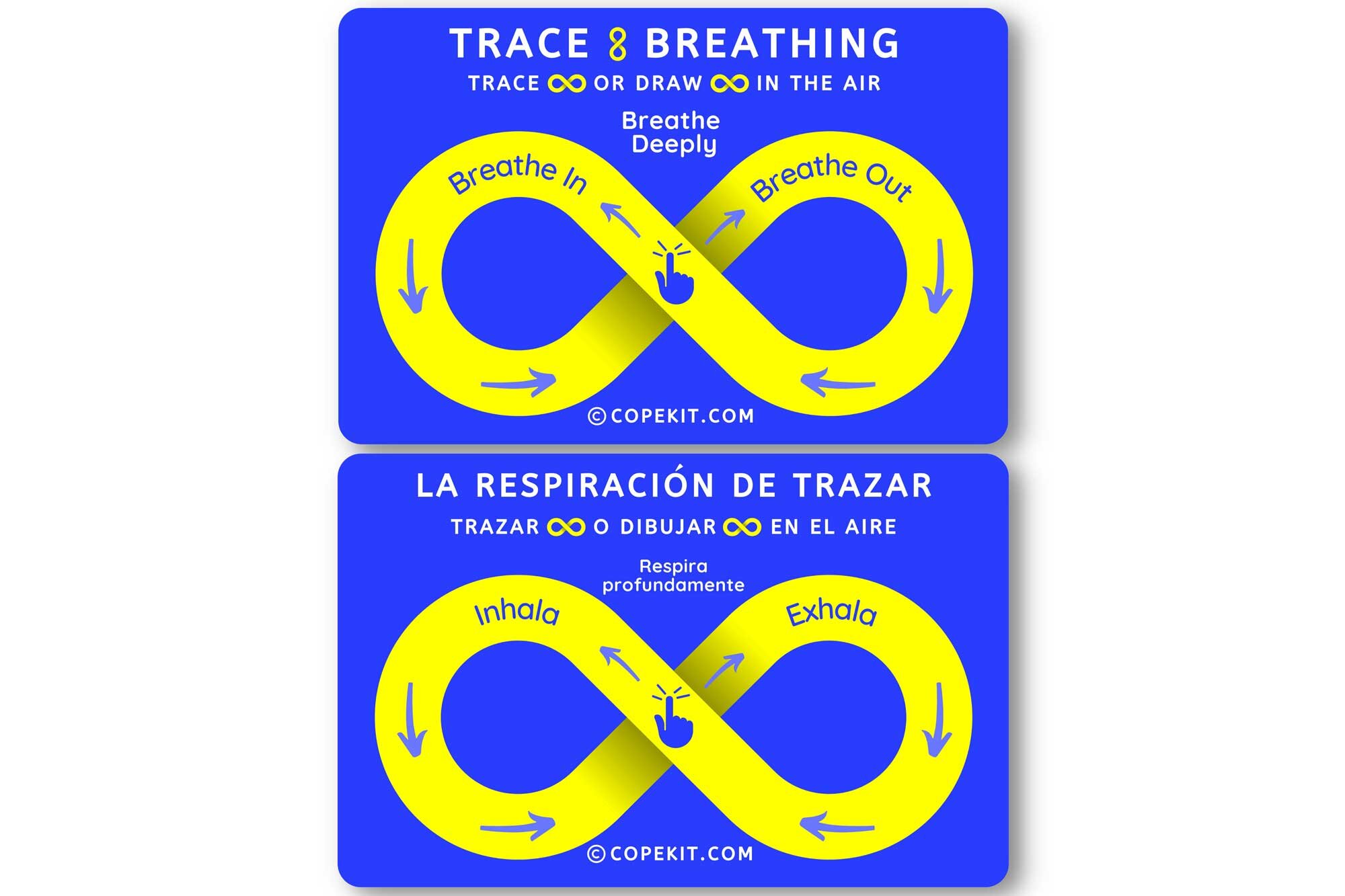How It Works
Our autonomic (involuntary) nervous system keeps our heart beating, blood flowing, lungs breathing, and stomach digesting. It has two main parts: the sympathetic – our emergency response system (“fight or flight”) and the parasympathetic – the daily maintenance system (“rest and relax”). During the stress/response cycle, with muscles needing 15 to 25 times more oxygen to move quickly, the sympathetic increases our respiratory rate, producing shallow, fast breathing. After the threat is over, the parasympathetic returns our breathing rate to normal except if we get overwhelmed and “stuck in alarm mode” (fight or flight). We can then use deep, slow breathing skills to send body messages to our brain to calm down, breaking the stress/response cycle. Breathing is the only involuntary function that we can control, making this skill critically important to stress management and trauma recovery. It is a fast acting, stress reliever.
How to Use
Use pointer finger to trace the figure eight. Breathe in as you trace one side of the figure eight, breathe out as trace the other side. Take deep, slow, gentle breaths of equal duration of inhalation and exhalation. Breathe into your stomach, watch your belly rise, and then fill your lungs. Breathe out from your stomach first. Try breathing in through your nose and breathing out through pursed lips. Feel the card as you go. Change directions. Draw a figure eight in the air, repeating the same breathing sequence. Trace an imaginary figure eight on your arm or leg for more multi-sensory engagement.
When to Use - Signs of Stress/Trauma
feeling upset: crying, shaking
anxious, panicked, feeling trapped
withdrawn, immobilized, freezing, not moving
can’t think, decide, concentrate; feeling confused
not able to follow directions
hyperventilating: rapid breathing, racing/pounding heartbeat, lightheaded, fingers tingling
increased blood pressure, sweating, headache, blurry vision
hyper-arousal: jumpy, agitated, explosive
panic attack symptoms
What It Can Do
decrease anxiety, distress; feel calmer
decrease physical tension
increase control over feelings (self-regulation)
increase concentration, problem solving, ability to think clearly
increase social engagement
increase compliance – ability to follow directions
promote return to normal breathing rate, heart rate & blood pressure
improve oxygenation of the brain
“Restoring a sense of self is critically important in recovering from trauma. Body-centered activities like deep breathing exercises help us regulate our internal states and restore and repair the connection between our minds and our bodies. “ – Bessel Van Der Kolk, Trauma Expert

